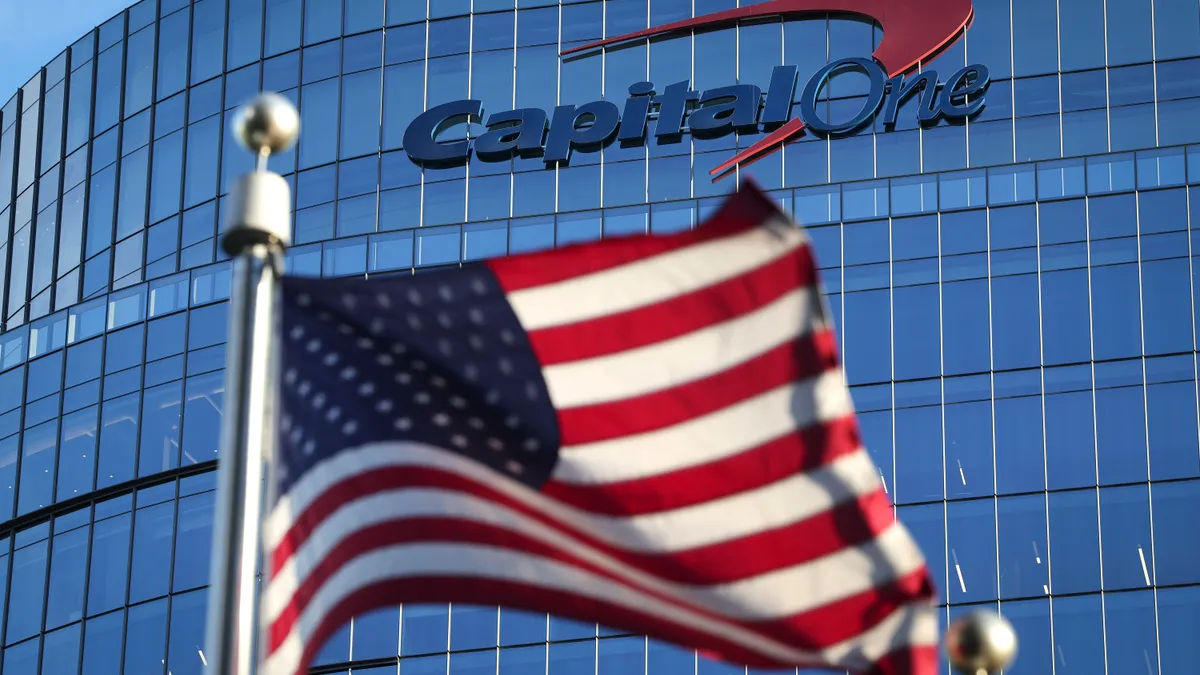Capital One and Citigroup plan to join the Federal Reserve’s one-year-old instant payments system, FedNow, sometime soon, representatives of those major banks said.
The two big banks are part of a small pack of major banks that haven’t yet become FedNow participants. That’s in contrast to about 900 financial institutions that have onboarded since FedNow launched last July. Two other FedNow laggards, Bank of America and PNC, said they are still evaluating whether to join the system.
Capital One and Citi, which both rank among the top U.S. banks, both said they anticipate connecting to the system when they were asked about their FedNow status. They would join those that have already plugged into FedNow, including JPMorgan Chase, the nation’s largest bank, as well as BNY Mellon, Byline Bank and Bridge Community Bank, among others.
“Capital One is planning to participate in FedNow and will be rolling it out to customers in the near future,” a spokesperson for that bank said by email.
Citi has a similar stance. “We are actively engaged in the development to join FedNow in the near future,” a spokesperson for Citi said.
Using FedNow, banks can clear payments within seconds, as opposed to the days typically needed to process payments via other federal systems. When the Federal Reserve rolled out FedNow last year, it was the biggest advance for the nation’s payments system in some 40 years and enabled the U.S. to potentially catch up with other countries already using such systems more widely.
Fed officials have said they’re not looking to sign up all 10,000 U.S. banks and credit unions, but the central bank is still far short of reaching the 8,000 financial institutions it has targeted.
Bank of America is one of the few major banks that remains on the fence about joining FedNow. “We are very supportive of faster payments in the U.S., and we continue to monitor the FedNow network and its progress,” a spokesperson for the Bank of America said by email.
PNC gave a similar response when asked for a statement about not connecting to FedNow. “PNC is supportive of continued growth in the payments ecosystem and remains committed to advancing the wider adoption of immediate payment options across the U.S., including the FedNow Service and The Clearinghouse’s Real Time Payments Network, among others,” a spokesperson for the bank said by email.
Banks across the country already have access to another real-time system started by The Clearing House in 2017. That system, called the RTP network, has been slowly making headway in reaching banks beyond its big network of international bank owners.
A important reason for the Fed starting FedNow was to make real-time inroads with smaller U.S. financial institutions that were leery of joining the RTP network run by their larger rivals.
For major banks that invested in RTP, including Citi, Capital One, PNC and Bank of America, there may have been less incentive to join FedNow, given they’ve already invested significantly in RTP. In addition, RTP already reaches most of the big financial institutions, so they may see less need to connect to smaller community banks and credit unions via FedNow.
Indeed, Citi noted in its statement, when asked about joining FedNow, that its “current U.S. instant payment capability is handled through TCH/RTP.”
FedNow and RTP are not interoperable, but officials from the government and private systems have discussed that possibility. For the moment, the fact that they’re not interoperable increases the cost to RTP participants in also connecting to FedNow.
For banks already connected to RTP, joining FedNow in addition is a question of the value of adding a connection to the financial institutions that are on FedNow, said one banker at a major financial institution who asked not to be named. Building a bank’s technology around another system that has different rules and specifications, and then training staff for that additional system is costly, he said. That’s particularly true in light of risk management concerns to protect a system against bad actors, he added.
Nonetheless, it’s not a matter of whether the banks will ultimately join the new FedNow system — it’s just a matter of when the incremental value of joining becomes compelling enough for them to do so, the banker said. It may also be beneficial to have a back-up system, he noted.
There are a range of reasons for banks joining FedNow, or not. Some banks, including JPMorgan, have clearly showcased their FedNow frontrunner status, perhaps giving them some political points with the central bank. Some banks may have also had business reasons for being a part of that system early on, like if they pitch services to smaller financial institutions.
Fed officials have not disclosed how much payments volume is being processed on the nascent FedNow system. That may be partly to avoid revealing a relatively low volume at this point, and undercutting the value of plugging into the system as the Fed campaign to lure financial institutions to the FedNow system continues.



















